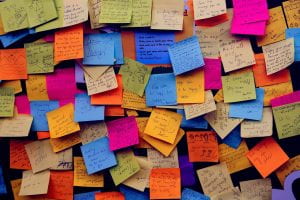Gellinger / Pixabay
*Balanced collection.
Balancing our collection in our primary school library has been a focus for us in 2019. Re-shelving the whole collection has given me an overview of what we had. Many books were incredibly outdated, were yellowing and hadn’t been borrowed for years as the previous TL was quite reluctant to take anything out of the collection. Through this process I become very used to throwing books out which was difficult to begin with, but gradually became easier. By the end of the process, we had a far more relevant, accessible, curriculum focused and used non-fiction collection. The fiction books were a little trickier and a slower process. I attempted to remove books that were damaged and yellowing however on further investigation many were part of a series. Weeding the middle book in a series cannot happen and when the other books were in good condition, do we make the decision to remove the whole series? Time was very limited so I changed tack and ran a report to identify fiction titles that have been in the library for 10+ years. All of these books have been separated onto a display area called “Rescue a book!” Those borrowed and enjoyed by students are returned to circulation, the others will be weeded at the end of year and offered to teachers for classroom collections. Many have been ‘rescued,’ however there are about 300 still on the shelf. I have taken out the Premier’s Reading Challenge (PRC) books and put them back in circulation to keep our PRC collection large.
My process for weeding the collection was simple; old, outdated or not borrowed in last few years. After reading the content in the modules, I can see more consideration needed to be taken with these decisions. Did the title promote critical thinking? Did it broaden and satisfy curiosity? Were illustrations and writing tone good quality? etc. Time of course was of the essence when considering the whole collection (10 000+) in a week! In the future, I will be a little more attentive to the contents rather than the quick flick through…
*What do I wish to explore further?
- I’d like to increase our multicultural content and support for our second language students. Our school population has changed rapidly and our library collection hasn’t kept pace with promoting the cultural backgrounds of the students. I’m told Abbey Bookshop in Sydney is a good place to start but as yet I haven’t visited. Perhaps after my next assignment is due…
- E-books. This is daunting and I don’t really know where to start.






